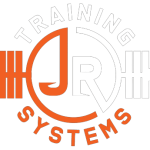In today’s fast-paced world, where desk jobs dominate the professional landscape, a significant portion of the population in Langley and beyond spends the majority of their day seated. This sedentary lifestyle has brought to light an array of health concerns, with back pain, poor posture, and reduced mobility leading the charge. Among these, thoracic spine mobility—or lack thereof—has emerged as a key player in the well-being of desk workers. This article delves into the importance of thoracic spine mobility, supported by relevant data, studies, and statistics, to illustrate its crucial role in combating the adverse effects of prolonged sitting.
The Thoracic Spine: A Linchpin for Posture and Well-being
The thoracic spine, located in the middle portion of the back, plays a pivotal role in overall spinal health and functionality. It is responsible for supporting the upper body and enabling a wide range of movements. A study published in the Journal of Back and Musculoskeletal Rehabilitation highlights the thoracic spine’s significant influence on neck and shoulder mechanics, asserting that limited thoracic mobility can lead to increased strain on these areas, potentially exacerbating issues such as back pain and poor posture.
Moreover, the American Chiropractic Association notes that back pain is the leading cause of disability worldwide, with a significant number of cases attributable to poor spinal health. For desk workers in Langley and elsewhere, maintaining thoracic spine mobility is not just beneficial—it’s essential for preventing the onset of discomfort and improving quality of life.
Enhancing Thoracic Spine Mobility: A Path to Alleviating Back Pain
Fostering thoracic spine mobility can significantly mitigate back pain, a common ailment among desk workers. The Spine Journal reports that exercises aimed at enhancing thoracic mobility have shown promising results in reducing back pain intensity and improving functional capabilities. These findings are crucial for individuals seeking non-invasive solutions to manage and prevent back pain, emphasizing the importance of incorporating targeted mobility exercises into daily routines.
Implementing simple stretches and mobility drills during the workday can be a game-changer for those confined to a desk, promoting spinal health and mitigating the risk of developing chronic conditions. Such practices not only address the immediate discomfort but also contribute to a sustainable, healthy posture, aligning with long-term wellness goals.
The Role of Thoracic Spine Mobility in Postural Correction
Poor posture is a rampant issue among desk workers, leading to a host of musculoskeletal problems. The thoracic spine’s health is directly linked to one’s ability to maintain proper posture throughout the day. Research from the European Journal of Physical and Rehabilitation Medicine indicates that enhanced thoracic mobility is associated with improved postural alignment, reducing the likelihood of developing posture-related issues.
Incorporating thoracic spine mobility exercises into daily routines can offer a straightforward solution to the pervasive problem of poor posture, promoting spinal alignment and reducing stress on the lower back. For individuals in Langley facing the challenges of a desk-bound lifestyle, these practices can serve as a cornerstone for maintaining spinal health and overall well-being.
Conclusion
Thoracic spine mobility emerges as a fundamental element in the battle against the negative impacts of sedentary desk jobs. With the increasing prevalence of back pain, poor posture, and reduced mobility among professionals, it’s clear that focusing on the thoracic spine’s health is more than just beneficial—it’s necessary. By integrating targeted mobility exercises into daily routines, desk workers can significantly improve their quality of life, combating the discomforts associated with prolonged sitting. As we continue to navigate the demands of modern work environments, let’s prioritize our spinal health to ensure a future free from pain and full of mobility.

